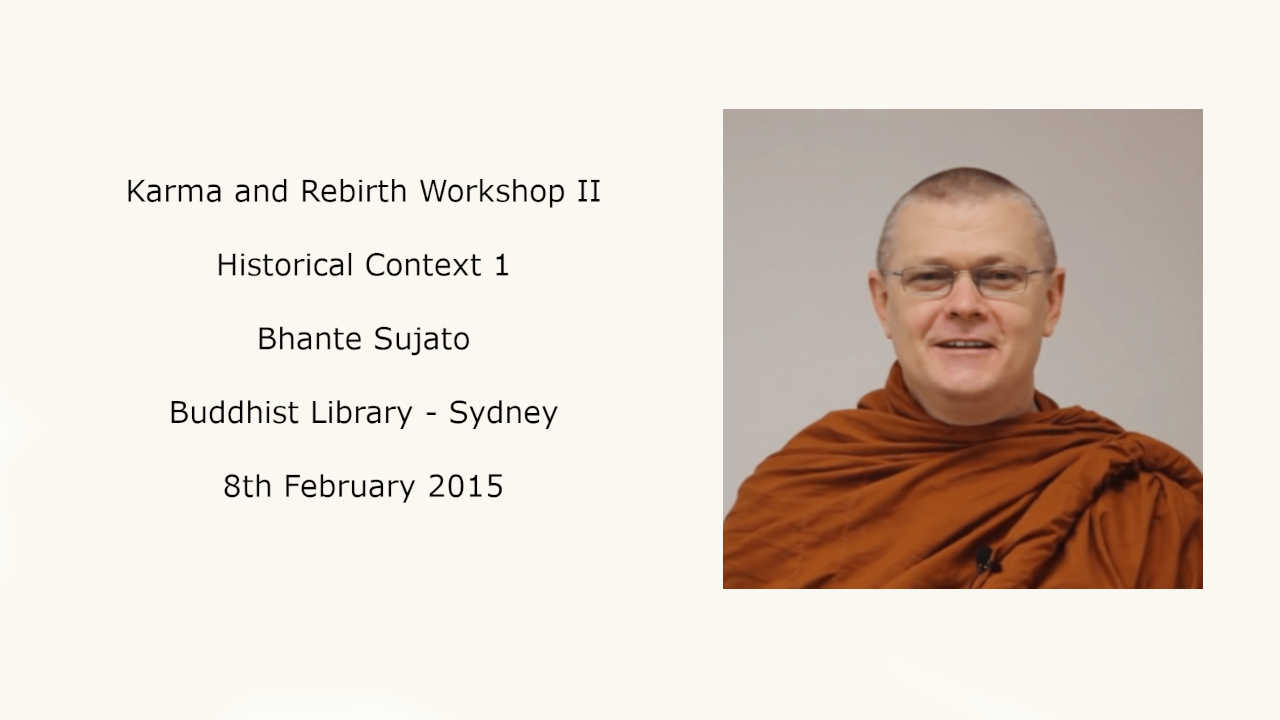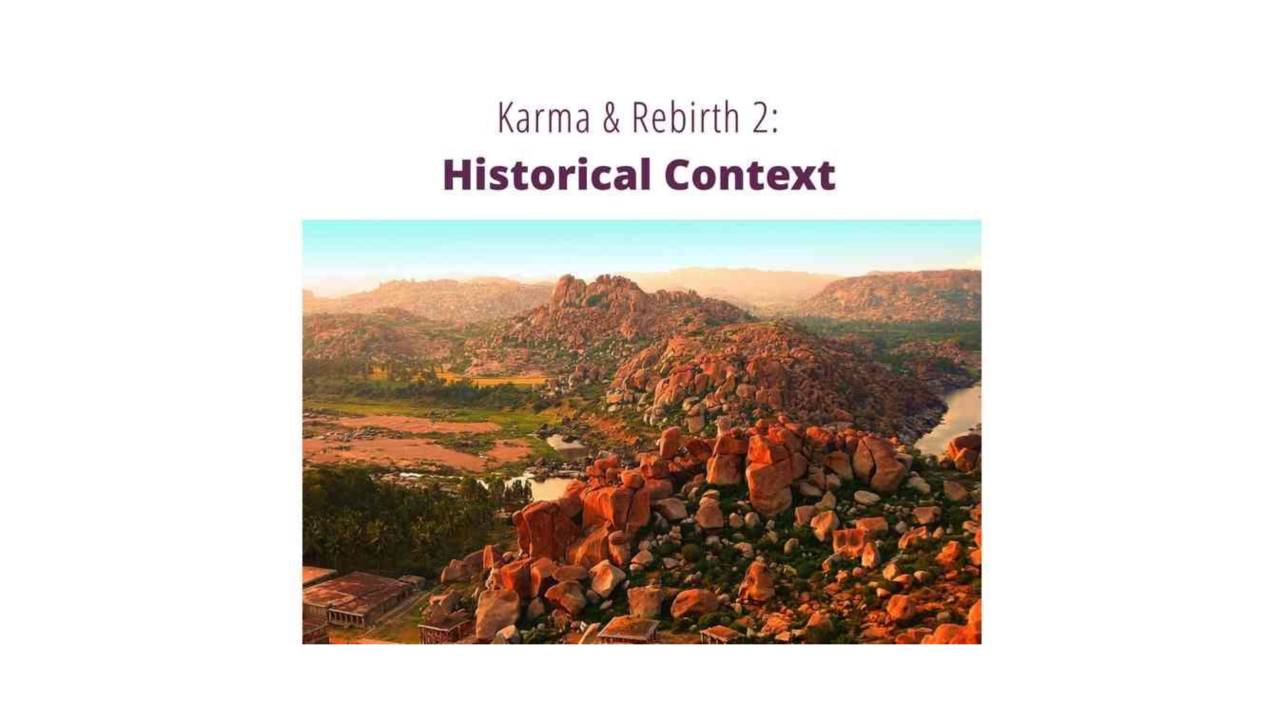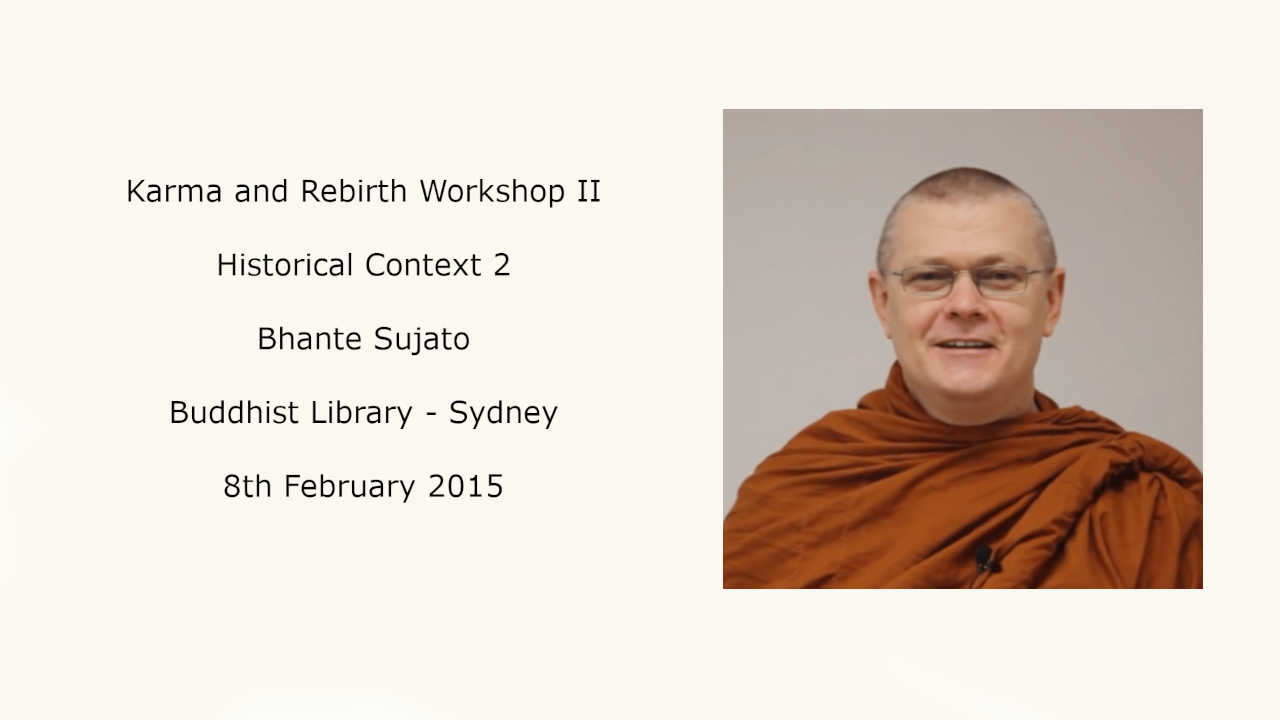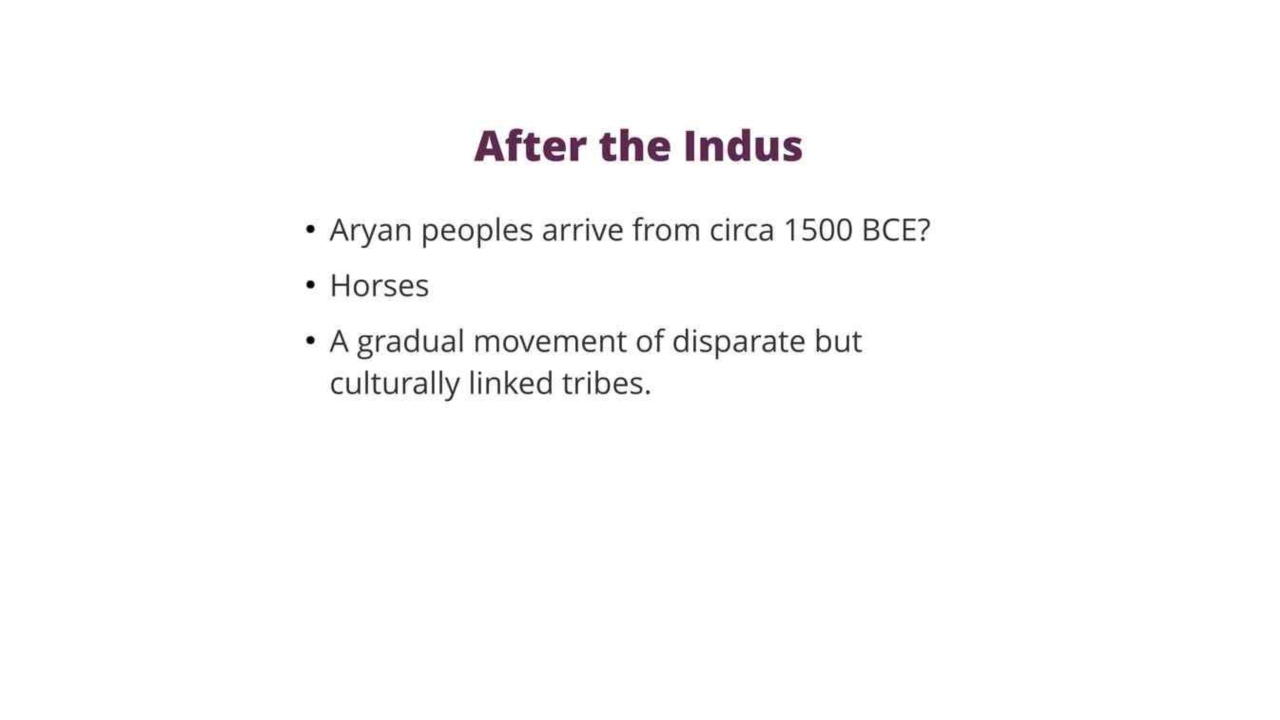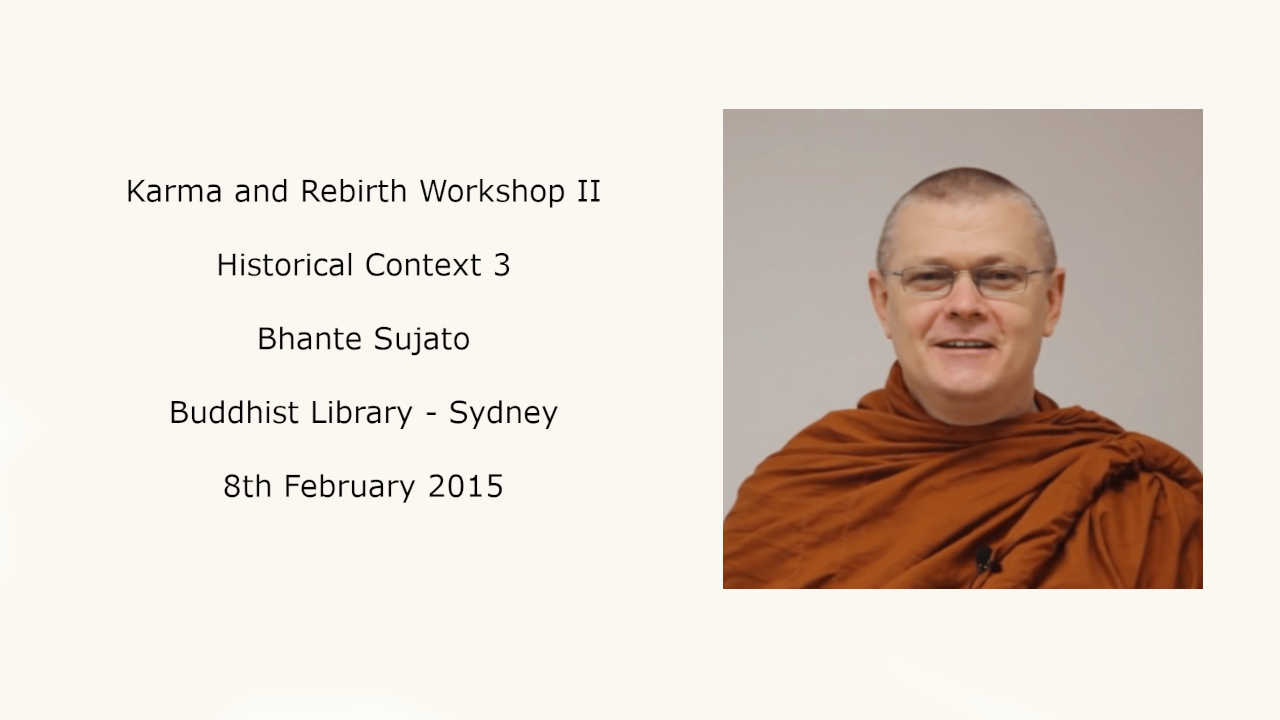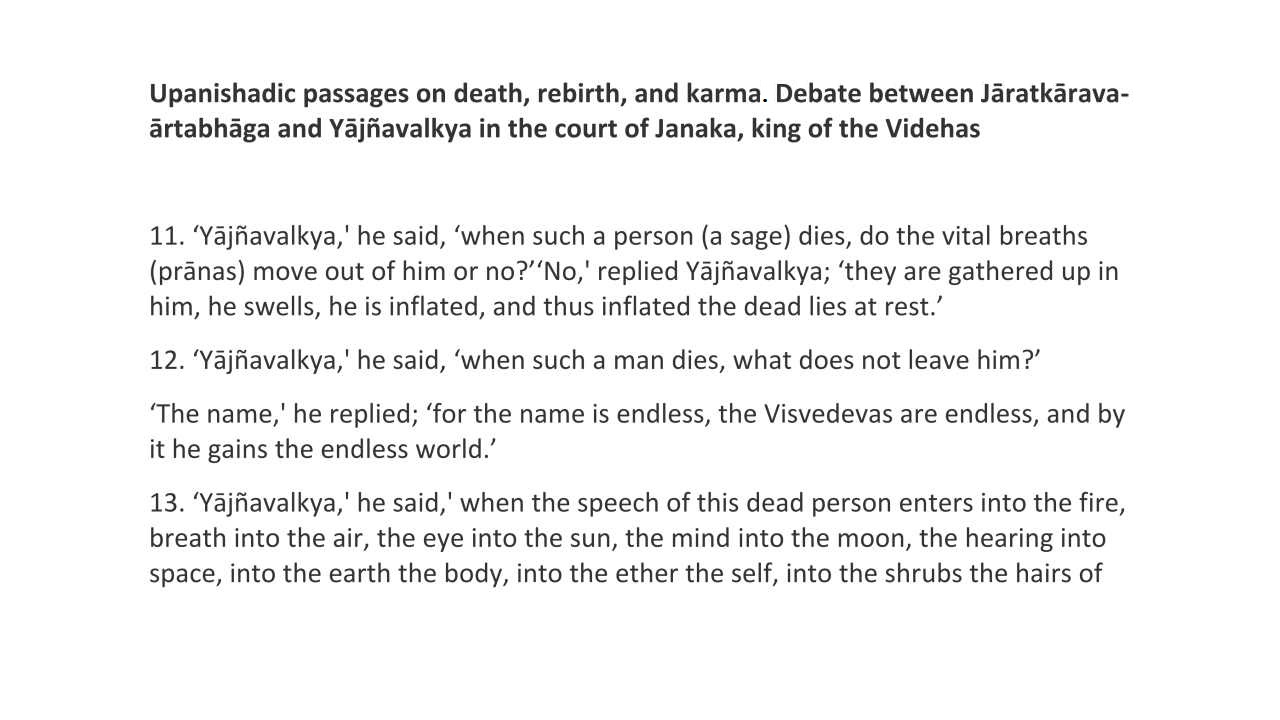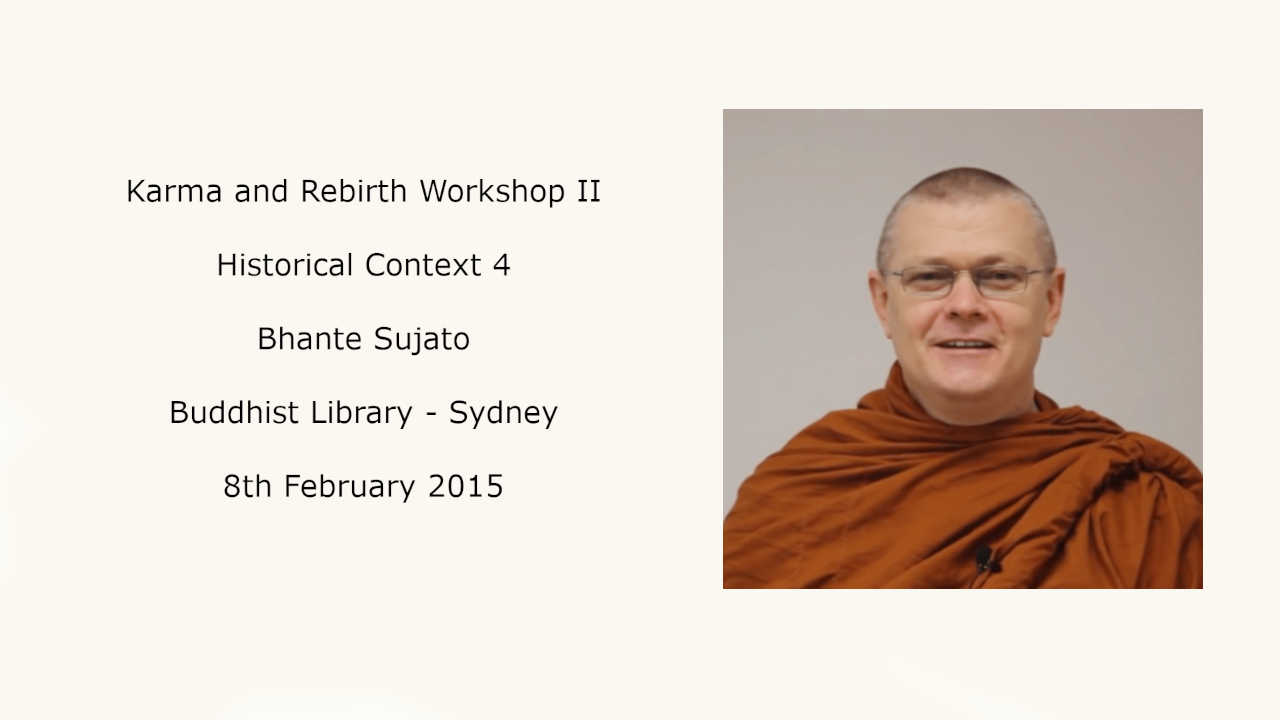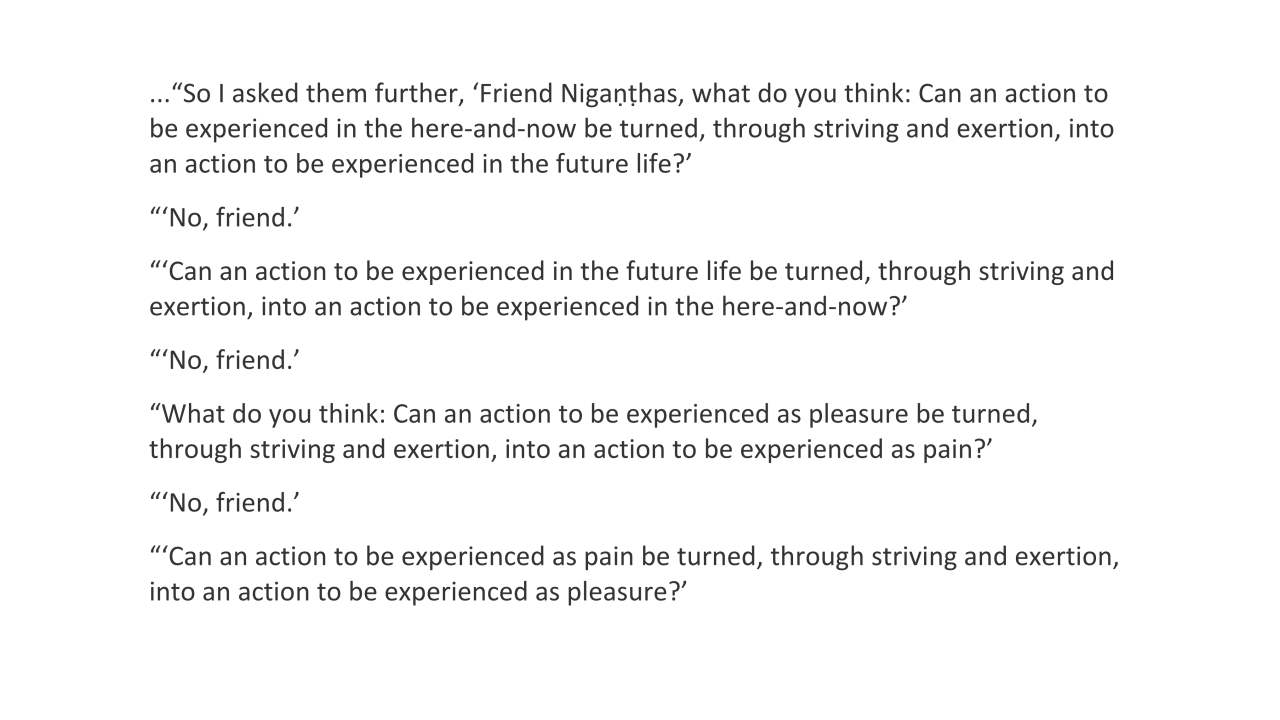Karma & Rebirth Workshop 2: Historical context
Introduction
The Buddha taught within a complex, shifting, and dynamic religious and philosophical environment.
His teaching is marked by a conscious and reflective engagement with the views and ideas that he encountered around him. Yet he would always insist that the core of his teaching was based on the direct perception of the truth.
What was new about the teachings of the Buddha? How did they relate to and build on existing ideas?
Please do not forget to read and contribute to the discussions on the Karma & Rebirth course at SuttaCentral.
Readings
1. Transcript of our interview with Richard Gombrich
2. MN101 Devadaha: Jain ideas.
(§ 1–20 in Bhikkhu Bodhi's translation)
3. DN05 Kūṭadanta: brahmanical vs. Buddhist sacrifice.
(§ 9–27 in Maurice Walshe's translation)
4. MN056 Upāli: Jain versus Buddhist ideas of kamma.
(§ 1–14 in Bhikkhu Bodhi's translation)
5. MN051 Kandaraka: more on the brahmanical sacrifice.
(§ 10 in Bhikkhu Bodhi's translation)
6. DN02 Sāmaññaphala: ideas on kamma and rebirth of other ascetics.
(§ 15–33 in Maurice Walshe's translation)
7. SN35:146 Kamma: old kamma and new kamma; compare with Jain ideas.
8. AN10.219 The deed-born body: Jain influence on the Pali Canon?
The following Workshop session was recorded at the Buddhist Library in Sydney on 8th February 2015.
Play the video below and follow along with the slides
mentioned in part 1:
Indus Valley Civililisation on Wiki
Additional video on Ancient India and Hinduism: Was Buddha a Hindu? - Ajahn Sujato
mentioned in part 2:
Guns, Germs, and Steel by Jared Diamond
James George Frazer
mentioned in part 4:
Ven. Anālayo’s comparative analysis of AN10.219 at SuttaCentral
The Workshop sessions from the BSWA Dhammaloka Centre in Perth on 22nd February 2015 are not currently archived at this site.

